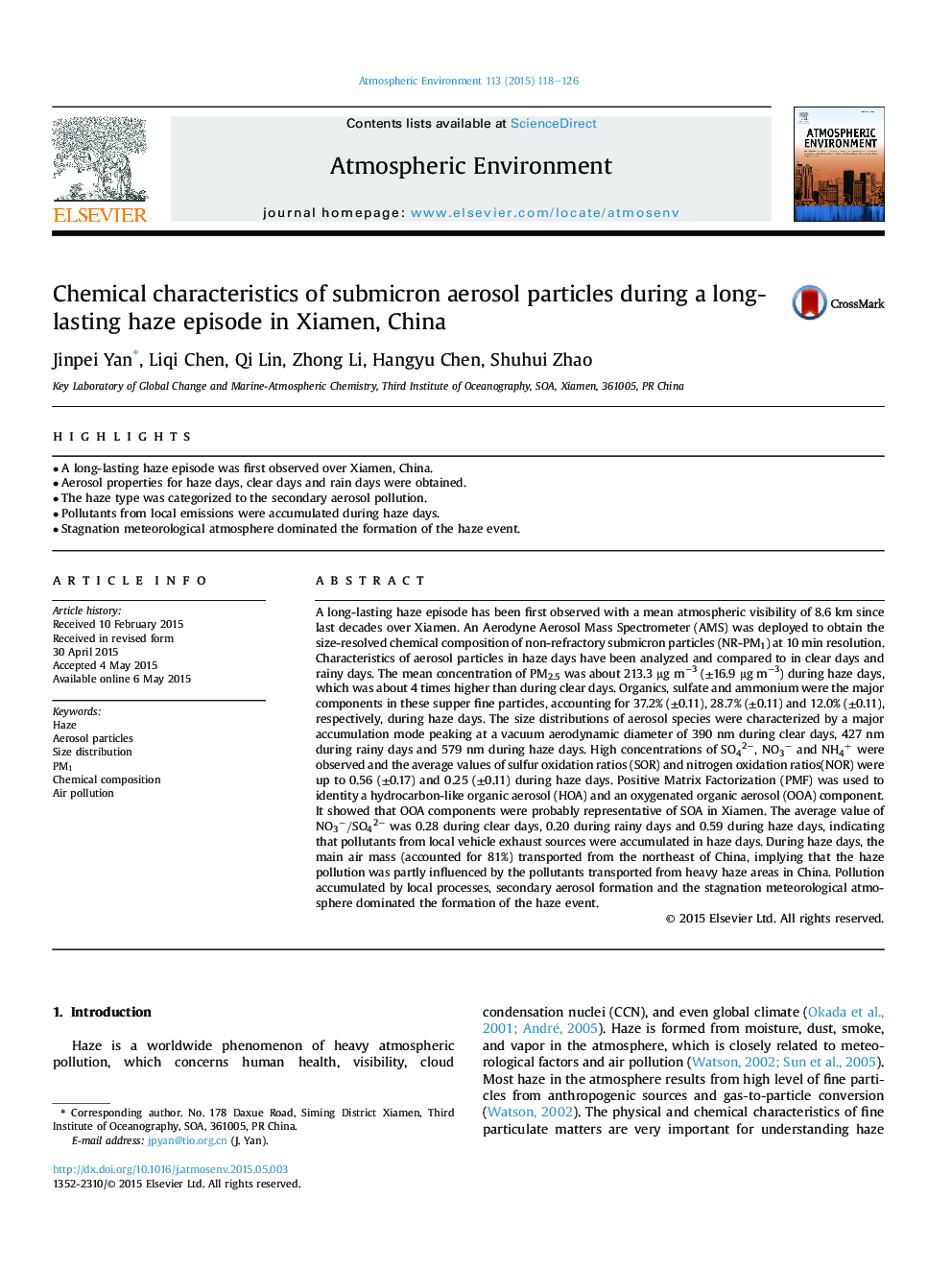| کد مقاله | کد نشریه | سال انتشار | مقاله انگلیسی | نسخه تمام متن |
|---|---|---|---|---|
| 6337983 | 1620358 | 2015 | 9 صفحه PDF | دانلود رایگان |
عنوان انگلیسی مقاله ISI
Chemical characteristics of submicron aerosol particles during a long-lasting haze episode in Xiamen, China
دانلود مقاله + سفارش ترجمه
دانلود مقاله ISI انگلیسی
رایگان برای ایرانیان
کلمات کلیدی
موضوعات مرتبط
مهندسی و علوم پایه
علوم زمین و سیارات
علم هواشناسی
پیش نمایش صفحه اول مقاله

چکیده انگلیسی
A long-lasting haze episode has been first observed with a mean atmospheric visibility of 8.6 km since last decades over Xiamen. An Aerodyne Aerosol Mass Spectrometer (AMS) was deployed to obtain the size-resolved chemical composition of non-refractory submicron particles (NR-PM1) at 10 min resolution. Characteristics of aerosol particles in haze days have been analyzed and compared to in clear days and rainy days. The mean concentration of PM2.5 was about 213.3 μg mâ3 (±16.9 μg mâ3) during haze days, which was about 4 times higher than during clear days. Organics, sulfate and ammonium were the major components in these supper fine particles, accounting for 37.2% (±0.11), 28.7% (±0.11) and 12.0% (±0.11), respectively, during haze days. The size distributions of aerosol species were characterized by a major accumulation mode peaking at a vacuum aerodynamic diameter of 390 nm during clear days, 427 nm during rainy days and 579 nm during haze days. High concentrations of SO42â, NO3â and NH4+ were observed and the average values of sulfur oxidation ratios (SOR) and nitrogen oxidation ratios(NOR) were up to 0.56 (±0.17) and 0.25 (±0.11) during haze days. Positive Matrix Factorization (PMF) was used to identity a hydrocarbon-like organic aerosol (HOA) and an oxygenated organic aerosol (OOA) component. It showed that OOA components were probably representative of SOA in Xiamen. The average value of NO3â/SO42â was 0.28 during clear days, 0.20 during rainy days and 0.59 during haze days, indicating that pollutants from local vehicle exhaust sources were accumulated in haze days. During haze days, the main air mass (accounted for 81%) transported from the northeast of China, implying that the haze pollution was partly influenced by the pollutants transported from heavy haze areas in China. Pollution accumulated by local processes, secondary aerosol formation and the stagnation meteorological atmosphere dominated the formation of the haze event.
ناشر
Database: Elsevier - ScienceDirect (ساینس دایرکت)
Journal: Atmospheric Environment - Volume 113, July 2015, Pages 118-126
Journal: Atmospheric Environment - Volume 113, July 2015, Pages 118-126
نویسندگان
Jinpei Yan, Liqi Chen, Qi Lin, Zhong Li, Hangyu Chen, Shuhui Zhao,